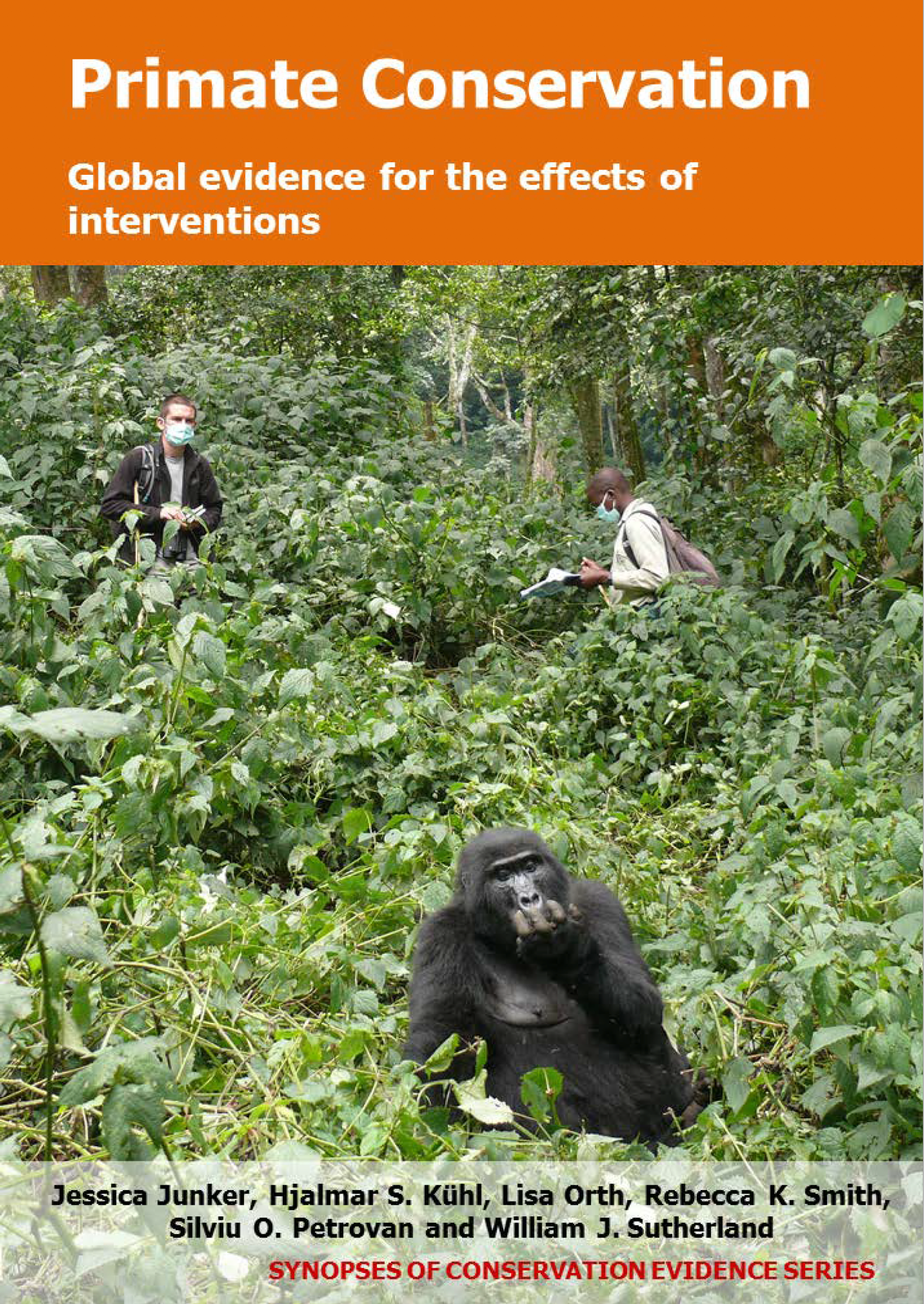Involve local community in primate research and conservation management
-
Overall effectiveness category Unknown effectiveness (limited evidence)
-
Number of studies: 4
View assessment score
Hide assessment score
How is the evidence assessed?
-
Effectiveness
50% -
Certainty
20% -
Harms
0%
Study locations
Supporting evidence from individual studies
A before-and-after-trial in 1995 in Kibale National Park, Uganda found that a female captive, wild-born chimpanzee Pan troglodytes schweinfurthii that was part of a reintroduction project into which the local community was involved alongside other interventions, repeatedly returned to human settlements post-release and was subsequently returned to captivity. Eight days after her initial release, the 4-6 year old chimpanzee left the forest and was subsequently returned into the forest by project staff. For the following ten days, she travelled, fed, nested and engaged in social activities with the wild chimpanzee group. During this time, she increased ranging distance to humans and use of height, and visually monitored humans less regularly. However, the proportion of adult males in her vicinity decreased and she increasingly spent time alone. She was returned to captivity six weeks post-release. From the local community that initiated her confiscation from illegal captivity as a pet, at least ten community members worked directly and indirectly on the project. She was quarantined from humans, other than her caretakers, and wild chimpanzees, underwent pre-release training for three weeks before reintroduction into habitat with a resident wild population and had a tuberculosis test. The study does not distinguish between the effects of the different interventions mentioned above.
Study and other actions testedA before-and-after trial in 1985-1998 in riparian forest in the Community Baboon Sanctuary, Belize found that when local communities were involved in the management of the sanctuary alongside 11 other interventions, the population of black howler monkey Alouatta pigra, increased over 13 years. The howler monkey population increased from 840 to over 2,000 individuals (138%). No statistical tests were carried out to determine whether this difference was significant. Additional interventions included the protection of the sanctuary by the communities surrounding it, preserving forest buffer strips along property boundaries and a forest corridor along the river, constructing pole bridges over man-made gaps, preserving important howler food trees in large clearings, creation of a museum for education purposes, an eco-tourism and research programme, presence of permanent staff, and monetary (income from employment, tourism and craft industries) and non-monetary (e.g. better education) benefits to local communities for sustainably managing their forest and its wildlife communities. The study does not distinguish between the effects of the different interventions mentioned above.
Study and other actions testedA before-and-after study in 1967-2008 in tropical montane forest in Volcanoes-, Mgahinga-, and Virunga National Parks located in Rwanda, Uganda, and the Democratic Republic of Congo, respectively, found that despite the implementation of an environmental education programme in local communities along with other interventions, the mountain gorilla Gorilla beringei beringei population decreased over time. Annual population decline was 0.7%, resulting in an overall population decrease of 28.7% over 31 years. However, no statistical tests were carried out to determine whether this difference was significant. Details on the local conservation education programme were not provided in the study. Additional interventions included regular anti-poaching patrols, the removal of snares and when necessary, the herding of live-stock out of the park, and the implementation of development projects in nearby communities. The study does not distinguish between the effects of the different interventions mentioned above.
Study and other actions testedA before-and-after study in 2009-2012 in tropical forest near Takamanda National Park, Cameroon found that after implementing a community-based monitoring network called ‘Gorilla Guardians’ along with other interventions, incidents of Cross River gorilla Gorilla gorilla diehli poaching stopped. Gorilla guardians were selected by their respective communities. Their duties included regularly collecting data on the status and distribution of gorillas, facilitating communication between conservation authorities and their communities, and raising awareness within their communities. The programme was started with six guardians from villages in three forest areas near important gorilla sites. Two other villages were added to the network in 2011 and because of increased interest two more villages joined in 2012. Guardians fulfilled the role of anti-poaching rangers and communities were put in control of the monitoring of illegal activities that threaten gorilla survival in nearby forests. The study does not distinguish between the effects of the different interventions mentioned above.
Study and other actions tested
Where has this evidence come from?
List of journals searched by synopsis
All the journals searched for all synopses
This Action forms part of the Action Synopsis:
Primate Conservation
Primate Conservation - Published 2017
Primate Synopsis





)_2023.JPG)














